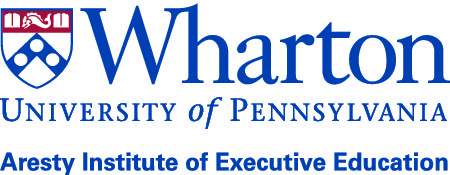- Behaviour
Neuroscience for Business Impact
The Wharton School’s Michael Platt is at the forefront in accessing the business benefits of neuroscience
One of the recurring criticisms of academic research is that it is too narrowly focused and as a consequence difficult to apply to the real-world of business where most decisions are cross-functional and multi-disciplinary. The University of Pennsylvania has tackled this issue head-on by appointing Penn Integrates Knowledge professorships, where the holder sits in two or more separate schools and is able to bring the insights and knowledge from one into the work of the other.
The university has now appointed 22 of these cross-disciplinary professors who variously link the different schools across the whole campus. Eight are attached to the Wharton School of Business and between them they connect Wharton to the schools of medicine, arts & science and law. Michael Platt is one of these and distinguishes himself by having tenure in two other schools, as well as Wharton: the department of neuroscience at the Perelman School of Medicine and the psychology department at Penn Arts & Sciences.
Neuroscience is not much use to business folk if it remains steeped in fMRI scans, and talk of dendrites, axon terminals and the cingulate gyrus only serves to show that for most of us the brain remains deeply mysterious. Nonetheless, the impact that a better understanding of what the brain can do, what motivates it (us) and perhaps more impactfully, what frustrates and impedes it is enormous – and requires people who can translate the complex science into practical business use. Platt does just this – but he also adds in a loop through the psychology department where he can build-on the many years of psychological research and experimentation that exists, and provide a neurological framework to support the psychological insights we have long observed.
……………………………………………………………………………………………………………………
Join Wharton’s Leveraging Neuroscience for Business Impact program for a deep understanding of how the brain works and how to use this knowledge in leading your organization
Dates: May 13 - 16, 2019 │ Format: In-class study │ Location: Philadelphia, PA
……………………………………………………………………………………………………………………
In fact, the opportunity for businesses to benefit from better understanding of how the brain works are fairly limitless. For instance all businesses need to be innovative these days – and Platt’s ‘Wharton NanoTool’ concisely and elegantly summarises how the brain needs to be prepared to optimise that and the advantages of the beginner’s mind: “The brain is organized into two distinct systems — one that promotes focus on well-known tasks and another that promotes exploration and creativity. When the focus system is activated, the brain’s innovation system is shut down, and vice-versa. That means when people have responsibilities involving duties they already know how to do, neurologically they can’t ‘think outside the box.’” He then goes on to suggest ways you can ‘unplug’ the brain from that detrimental restrictive focus.
I think that right now, for leaders who come and take the executive education program, they're really getting a seat at the table for the cutting edge in neuroscience applications in business.”
Platt’s main neuroscience research interest has been in decision-making, however. He has grown with the science, since his early days at NYU in the 1990’s where the research was as basic as identifying what happens in the brain as people distinguish between red and green lights, or if dots are moving left to right or vice versa. This was valuable from a neuroscience perspective but did not really deal with any issues that people in the real-world tussle with. It was the urge to understand what the brain is doing in deciding whether to gamble on $100 or go with a sure bet of $50; on deciding whom they are going to marry, or whether to accept a particular job or not that fired his curiosity. These are the kinds of decisions people need help in understanding – and it is what took Platt into psychology and economics.
Today the Wharton Neuroscience Initiative that he leads has led to greater understanding around such things as the biology that makes an individual a leader that other people will follow and the neuro-biological mechanisms that connect people on high functioning teams, compared with low functioning teams. Platt’s challenge is to take these experiments out of the controlled environment of the laboratory and run them in the real-world with all its noise and distractions. “We are at this exciting, dynamic place where we're beginning to test our ideas to deploy a lot of new wearable technology, some of which we've developed here at Wharton and Penn in my lab. To get data, get real neuroscience data from people in the real world, whether they're on the job, or in an interview, or they're shopping, they're having a retail experience. I think that right now, for leaders who come and take the executive education program, they're really getting a seat at the table for the cutting edge in neuroscience applications in business.”
Access to this level of multi-disciplinary research findings and discussion with those leading it is not easy for business executives to gain – and Platt clearly enjoys the interaction too.
In this short video Michael Platt describes introduces the Leveraging Neuroscience for Business Impact program:
At Wharton, we combine theory and practice with an industry perspective to deliver in-depth knowledge for immediate impact. More than 10,000 executives attend our programs annually.
ARTICLES YOU MIGHT LIKE
BOOK REVIEW
An authoritative antidote to executive stress, overwhelm, and burnout
DEVELOPING LEADERS QUARTERLY MAGAZINE AND WEEKLY BRIEFING EMAILS


































